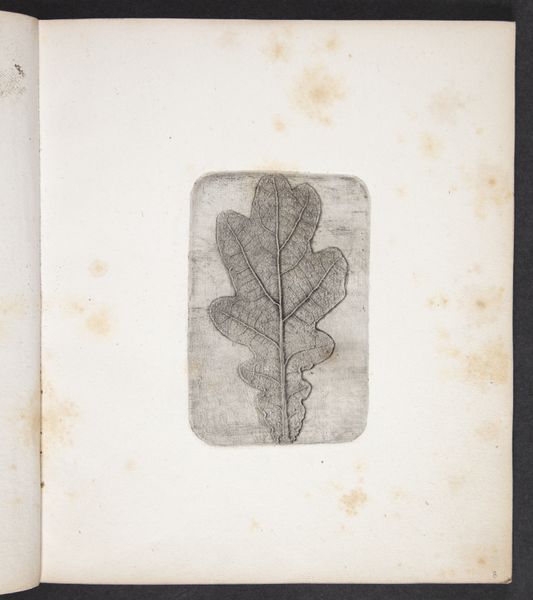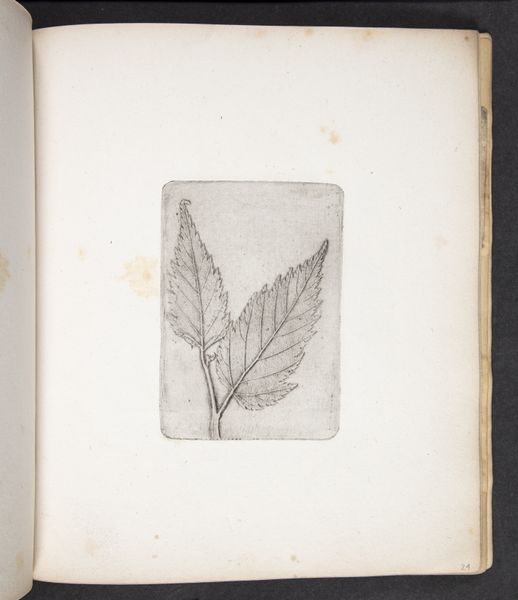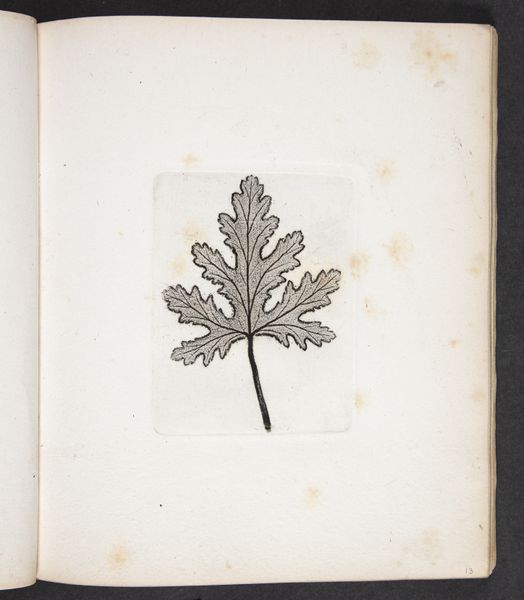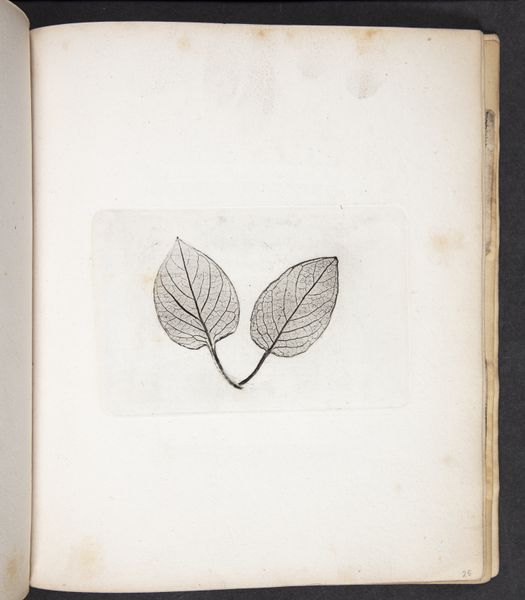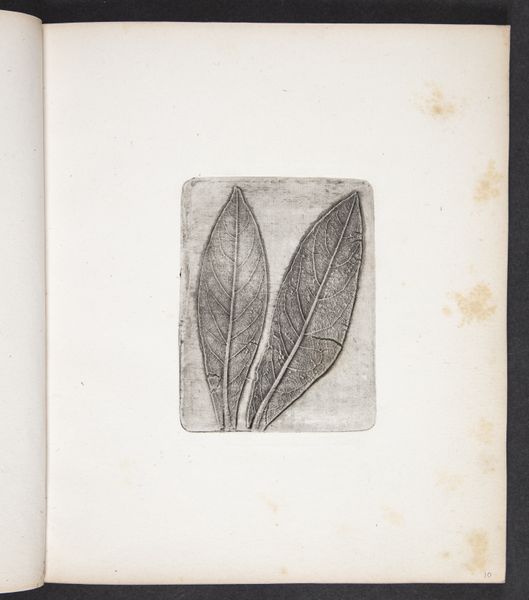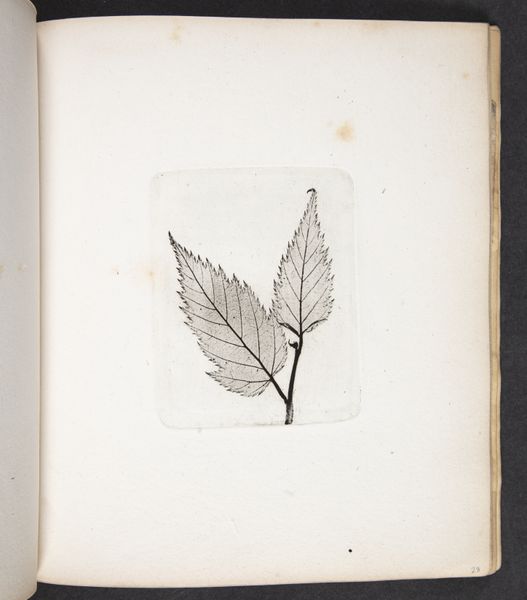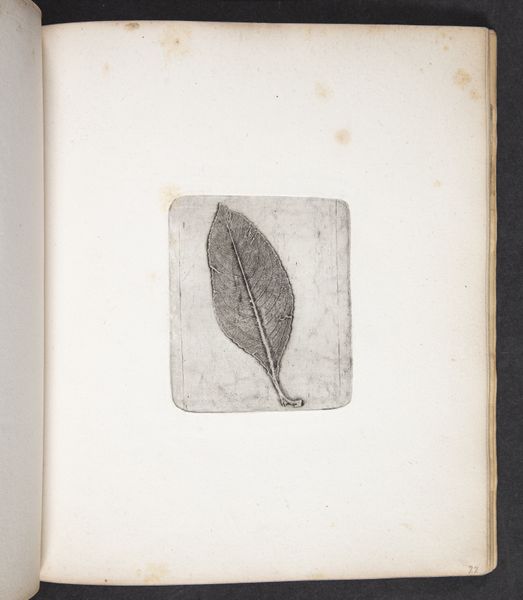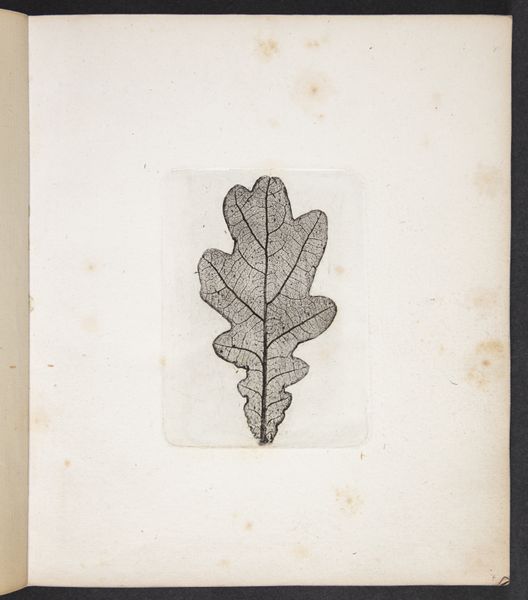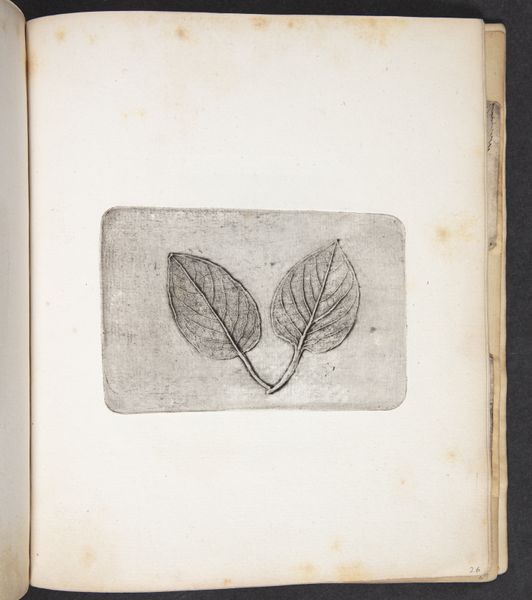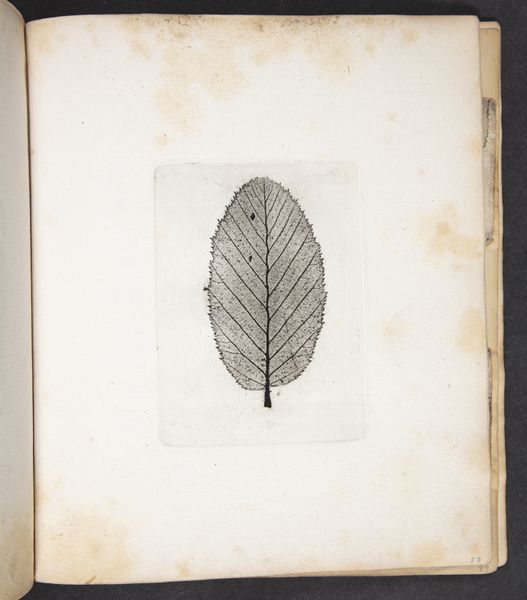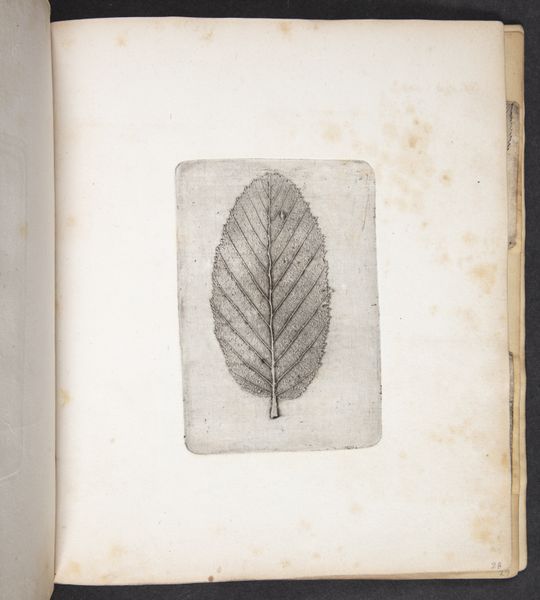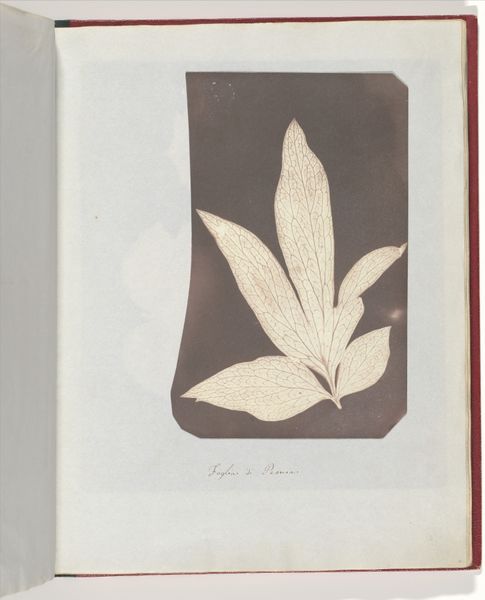
drawing, print, paper
#
drawing
# print
#
paper
#
line
#
nature
#
realism
Dimensions: 207 mm (height) x 182 mm (width) (Bladmål), 101 mm (height) x 75 mm (width) (Plademål)
Curator: What a delicate work! We're looking at "Aftryk af blad," or "Leaf Print," a print and drawing on paper created around 1833 by Peter Larsen Kyhl, currently held at the SMK - Statens Museum for Kunst. It seems deceptively simple. Editor: It has a certain melancholic air, don't you think? The grayness, the aged paper… It feels like holding a memory. The single leaf is presented like a relic. Curator: I find the printing process itself fascinating here. Kyhl painstakingly reproduced the leaf, likely pressing it or using some form of etching to capture the delicate veins. What labour went into a project like this! The work is not simply representational; it's an artifact documenting a manual and chemical process that brings nature and production intimately together. Editor: Absolutely, and in rendering it with such detail, it elevates the natural world. This simple leaf becomes a symbol – perhaps of nature’s beauty, vulnerability, or even a passing of time in that specific area. Note how its placement mimics pressed specimens. Curator: Precisely. Consider also the cultural context: 1833. The height of romanticism and an intense interest in natural history. It reveals both scientific curiosity and an appreciation of nature during this historical period. It is fascinating that an otherwise ephemeral object from the physical world has now become so persistent on this medium, and in this collection! Editor: The very act of imprinting gives this particular leaf a new context. It's been transformed, immortalized with symbolic meaning, as it shifts from merely botanical specimen to an item infused with emotions. This careful replication demands we focus on this particular leaf among the countless that exist. Curator: And it demands a specific encounter and appreciation that is a materialization of work, documentation, and the beginnings of something approaching botanical taxonomy. A meeting of production and scientific enquiry. It reveals as much about the processes and ideas of humans as it does about the structure of flora. Editor: Very true. I now view it as not only an accurate representation, but also an expression of something profoundly melancholic in us, reflecting an inevitable departure from, and reflection upon, the nature of things. Curator: A poignant observation; this investigation has only enhanced my curiosity regarding the making and maker of this quietly remarkable artifact.
Comments
No comments
Be the first to comment and join the conversation on the ultimate creative platform.
